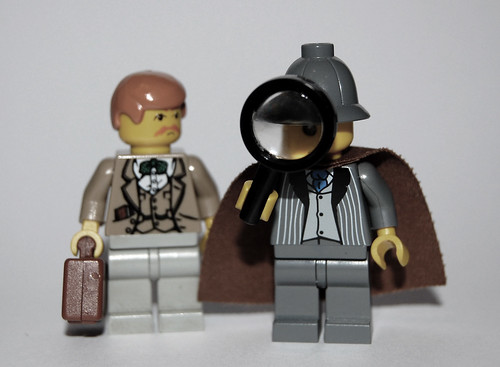The Moriarty Hypothesis

Sherlock Holmes appears in over fifty short stories and a few full-length novels. Only two of these stories contain his nemesis, Professor James Moriarty. Sir Arthur Conan Doyle introduced Moriarty in the story in which both disappear, grappling with each other as they topple over the Reichenbach Falls. Only after years of public pressure does Conan Doyle relent and bring Holmes back for another story.
- Moriarty is the author’s mechanism to kill off Sherlock Holmes.
The remainder of the Sherlock Holmes stories relate to him solving puzzles and outwitting criminals who are intelligent but not as intelligent as Holmes. These are the stories which made him famous and popular — A Study in Scarlet, The Sign of the Four etc. As readers we wish to marvel at the complex criminal schemes which Holmes can unravel with a single observation.
- Holmes is popular because he solves puzzles unlike any normal person.
Holmes was never an armchair detective — that role was filled by his brother Mycroft — but his action and adventure was in the name of solving the problem. If he could tell Inspector Lestrade where to send his men instead of doing the work himself that was all the better. He rarely took the role of chasing down criminals unless he was already in an encounter with them.
- Holmes is not a James Bond action hero but a detective.
Sherlock Holmes re-appears in countless radio, television and big screen adaptations. In many cases Moriarty exists as a malevolent presence which Holmes acknowledges from the beginning. Sooner or later the evil mastermind comes out of the shadows and the two meet. Of course a criminal mastermind is never as scary face-to-face as when hidden in the shadows so straight away Moriarty becomes less scary. Writers often attempt to compensate by making Moriarty appear unhinged and gruesome.
- Moriarty is less scary in the light than in the shadows.
Sherlock Holmes is a master of observation and deduction. He has a vast knowledge of obscure forensic data stored in his brain. Similarly Professor Moriarty is a criminal mastermind who subtly and imperceptibly controls the underworld in London and beyond. It is difficult but not impossible to create situations in which either one of them will appear as intelligent as they should but to show two vast intellects attempting to outwit each other is tricky beyond measure: both should appear to be more intelligent than the audience at all times.
- Moriarty battling Holmes is incredibly hard to write convincingly.
Moriarty attempts revenge on Sherlock Holmes whenever a plan is foiled. This was his original role — to kill off Holmes for meddling in his schemes. But if Moriarty is introduced at the start he is always involved and quickly comes for revenge. This quickly turns a detective story into an adventure. Holmes turns into Bond. The detecting disappears and is replaced by gunfights, explosions and chases across train roofs. All exciting stuff but stuff we’ve seen before, elsewhere. Stuff that we don’t watch Sherlock Holmes stories for.
- Conclusion: Professor Moriarty ruins Sherlock Holmes.
Of course (6) should not be a surprise. We knew this from (1). Moriarty was designed to ruin Holmes.